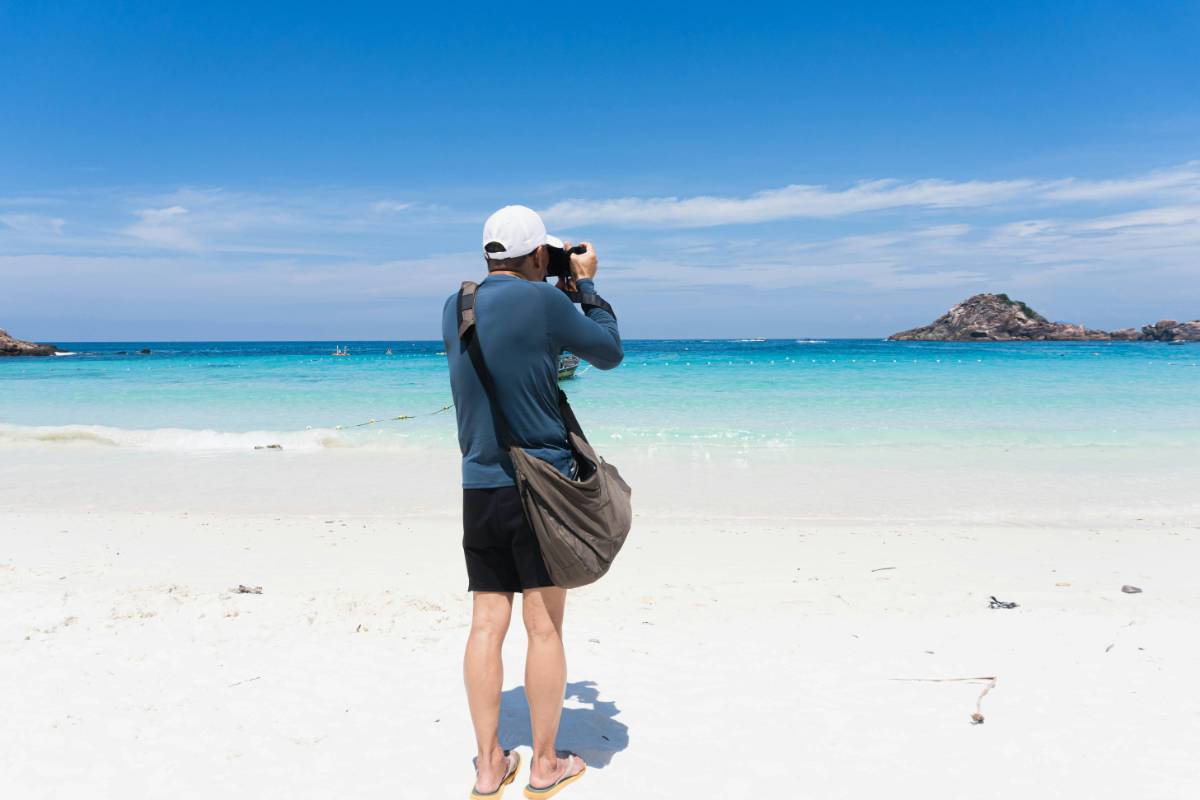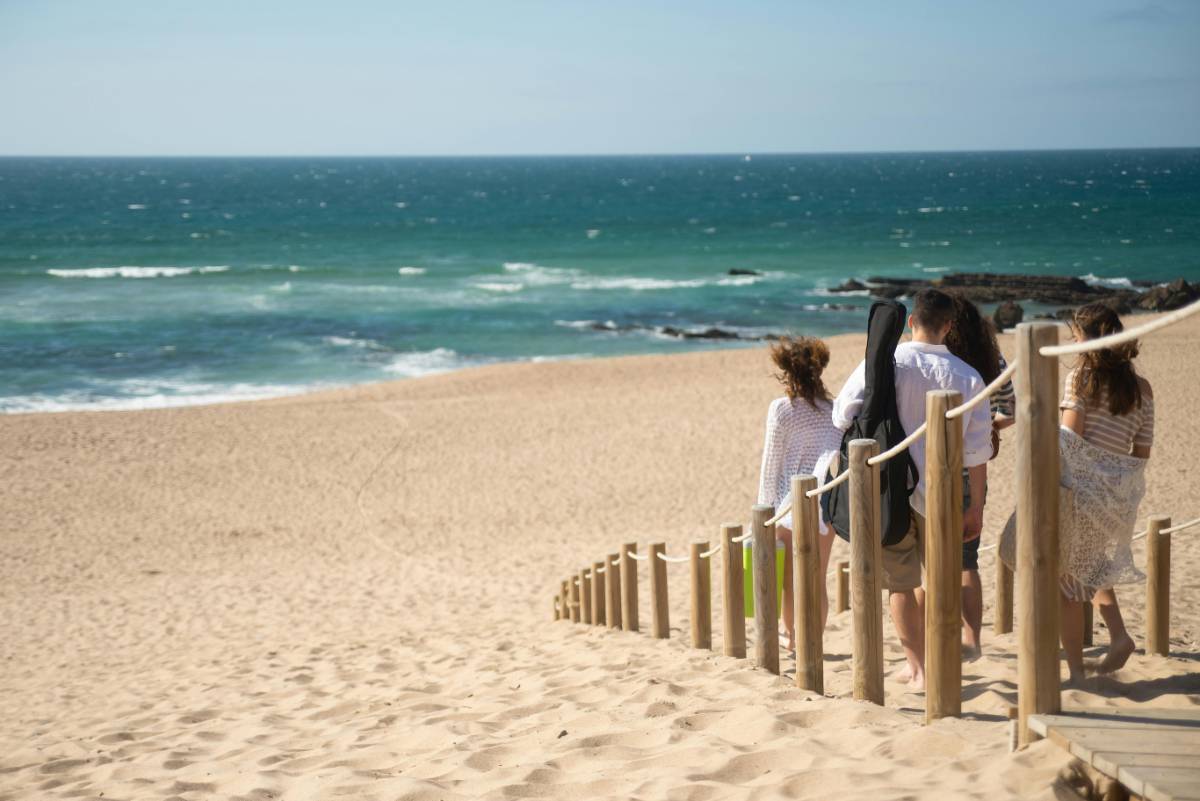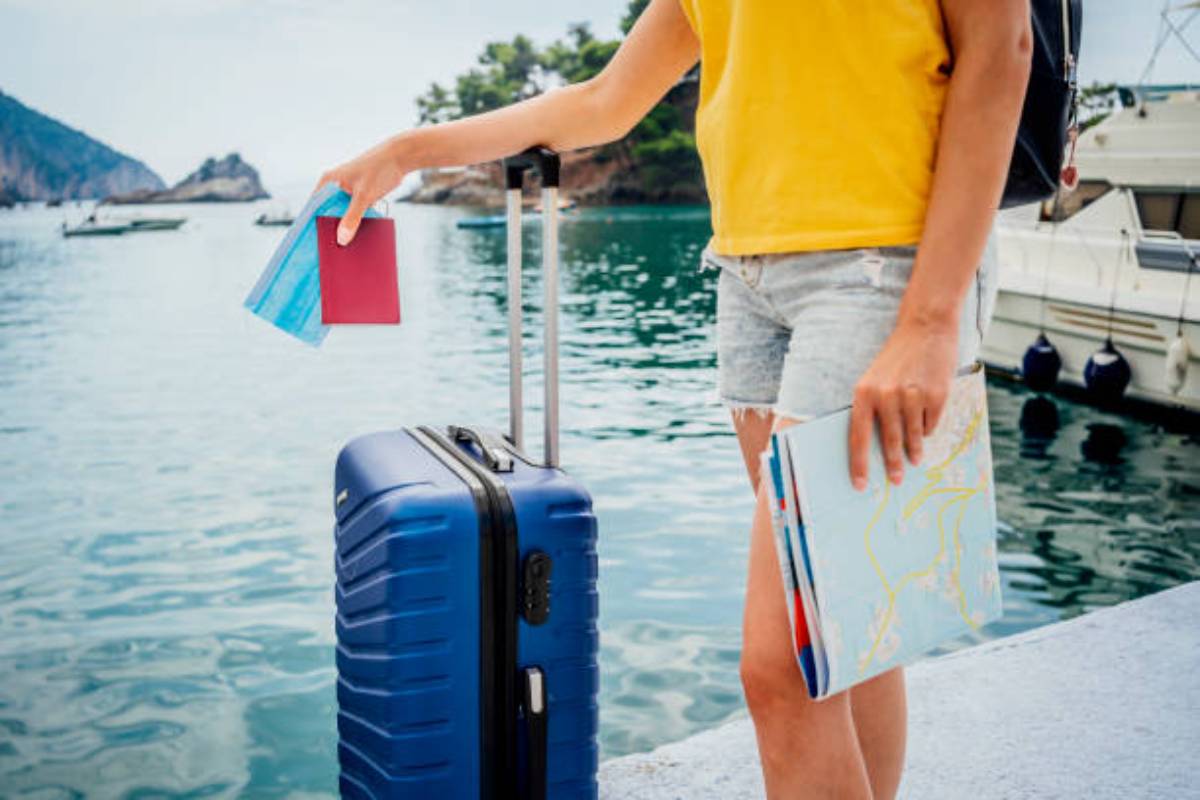
There’s something magical about a beach destination that invites relaxation, with its calming waves, warm sands, and the gentle rustling of palm trees. From secluded shores to luxurious resorts, here’s a guide to some of the most unforgettable beach destinations that guarantee the ultimate relaxation experience.
 The Caribbean Charm of Turks and Caicos
The Caribbean Charm of Turks and CaicosWith its stunningly clear waters and soft, white sands, Turks and Caicos is a go-to for anyone looking for a picture-perfect beach escape. Grace Bay Beach is particularly famous, offering 12 miles of uninterrupted coastline with minimal crowds, calm waves, and ample sun. Luxury resorts line the shores, catering to visitors who seek both comfort and serenity.
Visitors to Turks and Caicos can indulge in spa treatments, local cuisine, and water activities like snorkeling and paddleboarding. For those who prefer to relax with a view, several beachfront cafes and lounges provide a perfect setting for soaking in the island’s natural beauty.
The Serenity of the MaldivesThe Maldives remains a top choice for travelers seeking seclusion and peace. Known for its overwater bungalows, clear lagoons, and coral reefs, each island resort offers its private paradise, free from crowds and filled with luxurious amenities. You can wake up to panoramic views of the ocean, enjoy spa treatments on the beach, and unwind with yoga sessions by the water.
Beyond relaxation, the Maldives offers fantastic snorkeling and diving experiences. The reefs are home to vibrant marine life, including rays, turtles, and an array of colorful fish. For ultimate tranquility, consider booking a private villa, where you can have your own slice of paradise all to yourself.
Bora Bora is synonymous with romance and relaxation. Known for its turquoise lagoons, coral reefs, and luxury resorts, this destination is ideal for those looking to unwind and reconnect. With private beaches, clear blue waters, and lush mountains, Bora Bora offers a mix of relaxation and natural beauty that is hard to match.
Luxury overwater bungalows are a highlight in Bora Bora, offering direct access to the lagoon and breathtaking sunset views. Enjoy leisurely days kayaking, snorkeling, or simply soaking up the sun on the beach. For those seeking adventure, a hike up Mount Pahia provides panoramic views of the entire island, making it a must-visit for nature enthusiasts.
Santorini’s beaches may be unique with their volcanic black and red sands, but its serene views and charming atmosphere make it a top destination for relaxation. Known for its whitewashed buildings, cliffside views, and vibrant sunsets, Santorini offers an unforgettable experience with a mix of beach relaxation and cultural exploration.
Visitors can relax on Perissa Beach, known for its black sand and tranquil setting, or explore the cozy streets of Oia. As one of Greece’s most iconic islands, Santorini offers a blend of laid-back beach vibes with a touch of Mediterranean charm. Luxurious villas overlooking the sea are a popular choice for a relaxing stay.
 The Undisturbed Beauty of Seychelles
The Undisturbed Beauty of SeychellesSeychelles is an idyllic choice for travelers seeking quiet, undisturbed beach time. Known for its lush landscapes, granite boulders, and crystal-clear waters, Seychelles offers a wide array of beaches, from the remote Anse Source d’Argent to the luxurious shores of Beau Vallon. Each beach offers its unique charm, but all are marked by calm waters and minimal crowds.
Beyond the beaches, Seychelles is also known for its abundant wildlife, including giant tortoises. For an exclusive experience, visitors can book private villas or stay at one of the many eco-friendly resorts that cater to sustainable tourism, allowing you to relax while supporting the environment.
Phuket, Thailand: A Tropical GetawayPhuket, Thailand’s largest island, is famous for its vibrant beaches, luxury resorts, and relaxed vibe. Patong Beach and Kata Beach are popular spots for tourists, but quieter beaches like Nai Harn and Freedom Beach offer a more secluded escape. Thailand’s warm culture and exotic cuisine enhance the tropical relaxation experience.
For those interested in wellness, Phuket offers a range of spa treatments, beachfront yoga, and meditation centers. Additionally, the surrounding islands, including the Phi Phi Islands, provide day trip opportunities for snorkeling, diving, and exploring turquoise waters.
Maui, Hawaii: Where Nature Meets RelaxationMaui provides a blend of relaxation and adventure with its golden sands, lush jungles, and volcanic landscapes. From the famous Wailea Beach to the picturesque Ka’anapali Beach, Maui offers an array of options for beach lovers. Whether you want to unwind by the shore, explore marine life while snorkeling, or indulge in local Hawaiian cuisine, Maui has something for everyone.
For a unique experience, drive along the Hana Highway, where you can enjoy stunning views of waterfalls, lush greenery, and ocean cliffs. Maui also offers luxurious resorts with spa facilities, making it easy to relax and rejuvenate while immersed in the island’s natural beauty.
The Allure of the Amalfi Coast, ItalyThe Amalfi Coast is renowned for its dramatic cliffs, colorful villages, and picturesque beaches. Places like Positano and Ravello are favorites among travelers looking to unwind in a stylish yet tranquil setting. The beaches are pebbled and surrounded by charming towns, offering both relaxation and cultural exploration.
For a relaxing stay, book a seaside villa where you can enjoy spectacular views of the Mediterranean Sea. Enjoy local Italian cuisine, sunbathe on the beach, or take a boat trip along the coast. The Amalfi Coast blends elegance and natural beauty, making it a top choice for those seeking a sophisticated beach getaway.
Conclusion: Finding Your Perfect Beach EscapeWhether you’re looking for the secluded luxury of the Maldives, the dramatic cliffs of Santorini, or the cultural charm of the Amalfi Coast, there’s a beach destination out there for every type of traveler. Each of these destinations offers a unique experience, allowing you to unwind, recharge, and immerse yourself in the natural beauty of your surroundings. Embrace the relaxation and adventure that comes with a beach getaway, and discover the joy of escaping to one of these unforgettable beach destinations.
The best of Business news, in your inbox.

Legal Strategist & Thought Leader
Robert Anthony Brown brings a strategic legal mindset with a passion for translating legal complexities into digestible insights. Their articles reflect a deep understanding of justice, rights, and reform.
Read more from Robert Anthony Brown
In today's fast-paced world, where most people rush through their travel experiences, slow travel offers a refreshing approach. Slow travel encourages you to take your time, immerse yourself in the local culture, and savor every moment of your journey. By focusing on quality over quantity, slow travel allows you to create meaningful, memorable experiences. Here’s how you can embrace the art of slow travel on your next trip.1323a.jpg***Choose a Single DestinationOne of the key principles of slow travel is focusing on one destination rather than trying to see multiple places in a short amount of time. Instead of hopping from one city to another, spend several days (or even weeks) in one location to really get to know the area.By choosing a single destination, you have the opportunity to explore it deeply. Visit local landmarks, try different eateries, interact with residents, and discover hidden gems off the beaten path. This approach allows you to experience a place in a more authentic and fulfilling way.***Travel Slowly Between LocationsIf you do want to visit multiple destinations, take your time getting between them. Instead of booking the fastest mode of transportation, consider taking a train, bus, or road trip. These slower modes of travel not only offer scenic views but also allow you to experience the journey itself, rather than just rushing to the next destination.Taking a slow journey allows you to see more of the countryside, interact with locals along the way, and enjoy the process of travel itself. Plan for longer travel days to make the most of these slower routes.***Embrace Local CultureSlow travel is about connecting with the local culture and immersing yourself in the community. Take time to learn about the history, customs, and traditions of the place you are visiting. Attend local festivals, try regional foods, or participate in cultural workshops.By embracing the culture, you gain a deeper understanding of the place and its people. It also helps you step away from the typical tourist experience and see the destination through a more authentic lens.1323b.jpg***Stay in Local AccommodationsInstead of staying in large chain hotels, consider booking accommodations that are locally owned, such as guesthouses, boutique hotels, or Airbnb rentals. These types of accommodations often provide a more intimate and personal experience, as the owners can offer insider tips and recommendations that you wouldn't find in a guidebook.Local accommodations also give you the opportunity to support small businesses and experience the destination like a local. You’ll often find these types of places in quieter neighborhoods, allowing you to experience the rhythm of daily life away from the tourist crowds.***Unplug and DisconnectOne of the core principles of slow travel is the idea of disconnecting from the hustle and bustle of modern life. When traveling slowly, take the time to unplug from your devices and immerse yourself fully in the experience.Turn off your phone notifications, avoid spending too much time on social media, and embrace the present moment. This allows you to be more mindful of your surroundings and the people you encounter along the way.***Pace YourselfOne of the challenges of modern travel is the temptation to over-schedule. On a slow travel journey, it’s important to resist the urge to fill every moment with activities. Instead, prioritize quality over quantity and allow yourself time to relax and take things at your own pace.Take breaks when you need them, and give yourself permission to just sit in a café, people-watch, or wander aimlessly through a neighborhood. Slow travel is about savoring the journey, not rushing through it.***Enjoy SpontaneityWhile planning is important, slow travel also allows room for spontaneity. Sometimes the best experiences come from unplanned moments—discovering a hidden alleyway, stumbling upon a local market, or meeting a friendly local who offers to show you around.Allow yourself to follow your instincts and embrace these spontaneous moments, as they often lead to the most memorable parts of your journey.***Reflect and Disconnect at the End of Each DayAt the end of each day, take some time to reflect on what you’ve experienced. Slow travel encourages mindfulness, and taking a few moments to digest the day’s adventures can help you process your journey more fully.Whether you keep a travel journal, meditate, or simply enjoy a quiet moment with a cup of tea, reflecting at the end of each day allows you to truly appreciate the experiences you’ve had and makes your travel more meaningful.***ConclusionThe art of slow travel is all about savoring the journey rather than rushing to check off items on a list. By slowing down, immersing yourself in the local culture, and allowing room for spontaneity, you can create richer and more memorable travel experiences. The next time you travel, remember to slow down and enjoy every moment.

Travel insurance is an essential consideration when planning any trip, as it provides financial protection in case of unexpected events, such as trip cancellations, medical emergencies, or lost luggage. With so many travel insurance options available, it can be challenging to determine which policy best suits your needs. Here’s a guide to help you choose the best travel insurance for your trip.1309a.jpg***Assess Your Coverage NeedsThe first step in choosing the right travel insurance is to assess your needs. Consider the following factors to determine the type and amount of coverage you need:Trip Length: The longer your trip, the more coverage you may need, especially for medical expenses and evacuation.Destination: Some countries have high medical costs or specific travel risks that require additional coverage, such as coverage for extreme sports or natural disasters.Health Conditions: If you have pre-existing health conditions, look for a policy that covers them or offers medical evacuation if necessary.Travel Activities: If you plan on participating in activities such as hiking, skiing, or scuba diving, check that your insurance covers these activities.Budget: While it's important to have comprehensive coverage, you also want to make sure the policy fits your travel budget. Compare options to find a balance between cost and coverage.1309b.jpg***Understand the Types of CoverageTravel insurance policies typically offer several types of coverage, and understanding these can help you make an informed decision:Trip Cancellation: This coverage reimburses you for non-refundable trip expenses if you need to cancel your trip for a covered reason (e.g., illness, injury, or death in the family).Medical and Emergency Coverage: This is crucial for international travelers, as medical care can be expensive abroad. Ensure the policy covers emergency medical treatment, hospitalization, and evacuation if needed.Baggage and Personal Belongings: This coverage reimburses you for lost, damaged, or stolen luggage and personal items during your trip.Travel Delay and Missed Connection: If you miss a flight connection or experience delays that result in additional expenses, this coverage can help reimburse you for meals, accommodations, and transportation.Emergency Evacuation: This coverage is especially important for travelers going to remote areas. It covers the cost of getting you to a medical facility in case of a serious injury or illness.***Check the Policy ExclusionsNo travel insurance policy covers everything, so it’s essential to read the exclusions carefully. Common exclusions include:Pre-existing medical conditions: Many policies do not cover medical expenses related to pre-existing conditions unless specifically stated.High-risk activities: Activities like skydiving, bungee jumping, or mountaineering might not be covered under a standard policy. You may need to purchase additional coverage for these activities.Natural disasters: Some policies may not cover cancellations or delays caused by natural disasters, so make sure you're aware of these potential exclusions.War or civil unrest: Some policies exclude coverage for events related to war, terrorism, or civil unrest.***Evaluate the Insurance ProviderChoosing a reputable and reliable insurance provider is just as important as choosing the right policy. Look for the following when evaluating insurance companies:Customer service: Check reviews and ratings of the provider's customer service, especially when it comes to claims handling. Look for companies with 24/7 assistance available for emergencies.Financial stability: A financially stable company is more likely to be able to pay out claims when needed. Check ratings from agencies like A.M. Best or Standard & Poor’s to evaluate the provider’s financial health.Claims process: Investigate the claims process to ensure it is straightforward and efficient. Some insurers offer mobile apps that allow you to submit claims quickly while on your trip.***Compare Policies and PricesOnce you’ve determined the type of coverage you need and identified potential providers, it’s time to compare policies and prices. Use comparison websites or consult with a travel insurance broker to see what’s available for your trip. Keep in mind that the cheapest option may not always provide the best coverage, so make sure to review each policy’s terms and conditions carefully.***ConclusionChoosing the best travel insurance for your trip involves assessing your needs, understanding the coverage options, checking exclusions, and selecting a reputable provider. With the right policy in place, you can enjoy peace of mind knowing you're protected against the unexpected.

Traveling by air can be one of the most expensive parts of a trip, but with a little bit of planning and strategy, you can significantly reduce the cost of your airfare. Whether you're planning a weekend getaway or an international adventure, there are several insider tips that can help you save money and score the best deals. Here are some expert tips to help budget travelers save on airfare.1303a.jpg***Book Early (But Not Too Early)One of the most common pieces of advice for saving on airfare is to book early. While booking in advance can often result in lower prices, there’s a sweet spot to aim for. For domestic flights, the best time to book is typically 1-3 months before departure. For international flights, try to book 2-6 months in advance. Booking too far in advance or waiting until the last minute can lead to higher prices.Try to avoid booking flights too early or too late, as both can be costly. Track flight prices over time to identify the best time to book.***Be Flexible with Your Travel DatesFlexibility is key when trying to save on airfare. Flights can vary dramatically in price depending on the day of the week, time of day, and time of year. Typically, mid-week flights (Tuesday, Wednesday, and Thursday) are less expensive than weekend flights, as fewer people travel on those days.Consider traveling during off-peak seasons. Avoid popular vacation times like summer, holidays, and school breaks. Flying in the shoulder season or off-season can result in significantly cheaper fares.***Use Fare Comparison Websites and AppsTo find the best airfare deals, use fare comparison websites and apps like Google Flights, Skyscanner, and Kayak. These platforms allow you to compare prices across different airlines and booking sites, helping you find the lowest price available for your chosen route.Set up fare alerts to be notified when prices drop for your desired flight. Many sites and apps offer this feature, allowing you to track fluctuations in ticket prices and book when the price is right.1303b.jpg***Consider Nearby AirportsWhen searching for flights, don’t limit yourself to just the main airport in your destination city. Many major cities have multiple airports, and flying into or out of a secondary airport can save you money. Be sure to factor in transportation costs to and from the airport when considering this option.For example, if you’re flying into New York City, check flights to airports like LaGuardia, JFK, or Newark. A flight into one airport may be cheaper, even after accounting for the cost of ground transportation to your accommodation.***Fly on Budget AirlinesBudget airlines like Southwest, Ryanair, and Spirit often offer significantly cheaper fares compared to traditional carriers. While these airlines may charge for extras like checked luggage, seat selection, and snacks, they can still be a cost-effective option for budget-conscious travelers.Keep an eye out for flash sales and promotions from budget airlines. Signing up for their email newsletters or following them on social media can help you stay informed about special deals and discounts.***Use Airline Miles and PointsIf you’re a frequent traveler, using airline miles or credit card points can be a great way to save on airfare. Many credit cards offer travel rewards that can be redeemed for flights, hotel stays, and more.Sign up for frequent flyer programs with airlines to accumulate miles that can be redeemed for future flights. Even if you don’t fly often, you can still take advantage of credit card reward programs to earn points toward flights.***Book Connecting Flights Instead of NonstopNonstop flights are often more convenient, but they can also be more expensive. If you're willing to add a little extra time to your trip, consider booking a connecting flight instead of a direct route. Connecting flights can be cheaper, especially if you have flexibility with your travel time and destinations.Check different layover options to find the best deals, but be mindful of long layovers that could add unnecessary time to your journey.***Check for Deals on Social MediaMany airlines and travel companies post exclusive deals and discounts on their social media channels. Follow airlines, travel agencies, and deal sites like Secret Flying or The Flight Deal to catch flash sales and promotions that might not be advertised on fare comparison websites.Social media platforms are also a great way to stay updated on last-minute sales and special offers from airlines.***Be Aware of Hidden FeesWhile a flight might look like a great deal at first glance, make sure to factor in all potential fees. Budget airlines and even some major carriers often charge additional fees for baggage, seat selection, and other services. Be sure to read the fine print before booking to avoid unexpected costs.Consider whether you need checked luggage or if you can make do with just a carry-on. If you're traveling light, you can save money by avoiding checked baggage fees.***ConclusionSaving on airfare doesn’t have to be difficult. By using these insider tips—booking at the right time, being flexible with your travel dates, comparing prices across multiple platforms, and using rewards points—you can save significant amounts on your flight tickets. With a little planning, you can fly to your next destination without breaking the bank!

For wine lovers, there's nothing better than combining travel with the discovery of exquisite vineyards. From the rolling hills of Tuscany to the sun-drenched valleys of California, the world’s best wine regions offer an unforgettable experience. Here are some of the top vineyard destinations to visit around the world.1321a.jpg***Bordeaux, France: The Heart of French Wine CountryBordeaux is synonymous with fine wine, offering a landscape dotted with vineyards and charming châteaux. Known for its red wine blends, Bordeaux has been producing wine for centuries. The region is home to some of the most famous wine estates in the world, such as Château Margaux and Château Lafite Rothschild.Bordeaux’s wine tours offer the chance to taste world-renowned wines, while also experiencing the picturesque French countryside, medieval towns, and fine dining.***Napa Valley, USA: America's Premier Wine RegionLocated in California, Napa Valley is one of the most popular wine regions in the United States. Known for its rich reds, particularly Cabernet Sauvignon, Napa is a place where wine lovers can enjoy both high-end wineries and casual tasting rooms. The scenic vineyards set against the backdrop of the Mayacamas Mountains make Napa a stunning place to visit.Napa Valley offers year-round wine festivals, and visitors can take part in guided wine tours, cooking classes, and even vineyard bike rides. The region’s Mediterranean climate makes it ideal for wine production.***Tuscany, Italy: A Blend of History and WineTuscany is a dream destination for wine enthusiasts. The rolling hills, historic villages, and famous vineyards create a picturesque backdrop for a wine-focused vacation. Tuscany’s Chianti region is famous for its Sangiovese wines, but the region also produces a variety of reds and whites.You can visit vineyards that have been around for centuries, enjoy wine tastings with local food pairings, and explore the beautiful Tuscan countryside. Don’t miss a visit to the iconic medieval town of San Gimignano and its wine cellars.1321b.jpg***Mendoza, Argentina: Wine in the AndesMendoza is Argentina’s most famous wine region, nestled at the foothills of the Andes. Known for its Malbec wines, Mendoza is a region that offers wine lovers an opportunity to explore high-altitude vineyards and enjoy spectacular views of the mountains. The region’s dry climate and abundant sunshine make it perfect for growing rich, full-bodied wines.In addition to wine tasting, Mendoza offers activities such as horse riding through the vineyards and exploring local wine museums. The combination of stunning natural beauty and world-class wine makes it a must-visit destination.***Rioja, Spain: Spain’s Premier Wine RegionRioja, located in northern Spain, is one of the country’s most famous wine regions. Known for its Tempranillo wines, Rioja offers visitors a chance to explore traditional wineries that have been making wine for generations. The region’s beautiful landscape, with vineyards stretching across the rolling hills and valleys, is perfect for a wine-themed getaway.In Rioja, you can visit historic wine cellars, sample a variety of wines, and learn about the unique aging process of Rioja wines. The region also offers fantastic cuisine, making it a perfect destination for food and wine lovers.***Cape Winelands, South Africa: A Hidden GemThe Cape Winelands of South Africa are quickly gaining recognition as one of the world’s top wine destinations. Just a short drive from Cape Town, the region is home to scenic vineyards, rolling hills, and charming towns such as Stellenbosch and Franschhoek. The area is known for its excellent Sauvignon Blanc, Chardonnay, and Pinotage wines.Cape Winelands offers a range of activities, from wine tastings to horseback riding through the vineyards, as well as gourmet restaurants that showcase the best of South African cuisine paired with local wines.***La Rioja, Chile: An Unforgettable Wine ExperienceLa Rioja in Chile is often compared to Bordeaux due to its exceptional wines and picturesque vineyards. Located at the base of the Andes mountains, this region is known for its smooth reds, particularly Carmenère and Cabernet Sauvignon. La Rioja offers breathtaking landscapes with its vineyards, mountains, and charming small towns.Visitors can enjoy private wine tours, explore the region’s artisanal wines, and relax at luxurious vineyard hotels with sweeping views of the Andes. La Rioja is perfect for those looking for an off-the-beaten-path wine experience.***Marlborough, New Zealand: A Cool-Climate Wine RegionMarlborough is New Zealand’s most famous wine region, known for its fresh and vibrant Sauvignon Blanc. Located on the South Island, Marlborough is characterized by its cool climate and long sunlight hours, creating the ideal conditions for aromatic white wines and Pinot Noir.Marlborough offers visitors a chance to take scenic bike tours through the vineyards, enjoy tastings at boutique wineries, and explore the nearby coastline. The region’s natural beauty, combined with its world-class wines, makes it an unforgettable destination.***Okanagan Valley, Canada: A Rising StarOkanagan Valley in British Columbia is an up-and-coming wine region known for its diverse wine production. With a growing number of wineries, the valley produces everything from ice wine to Chardonnay and Merlot. The area’s stunning scenery, with lakes, mountains, and vineyards, makes it a picturesque wine destination.Okanagan Valley is perfect for those looking for a more laid-back wine experience, with activities such as vineyard picnics, wine tasting tours, and boating on Okanagan Lake.***ConclusionWine and travel go hand in hand, offering a chance to explore the world’s most beautiful regions while indulging in some of the finest wines. Whether you're touring the iconic vineyards of Bordeaux, sipping Malbec in Mendoza, or discovering the hidden gems of South Africa, a wine-themed vacation promises to be both educational and unforgettable. Plan your next wine adventure to one of these top vineyard destinations and savor the experience.